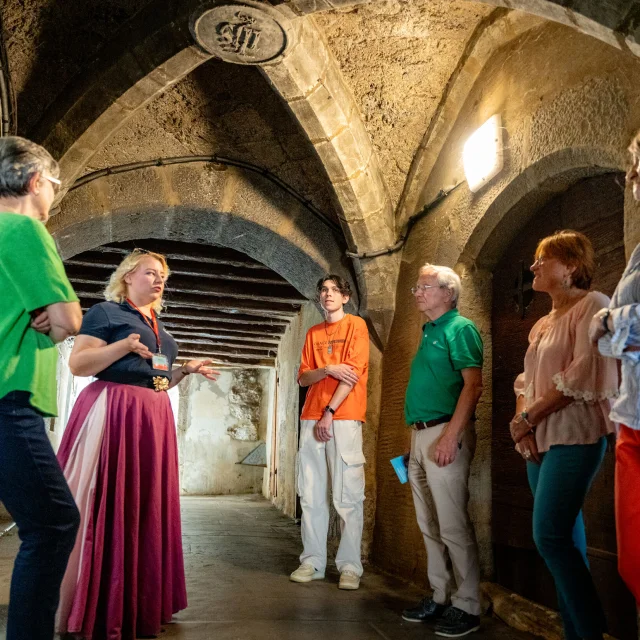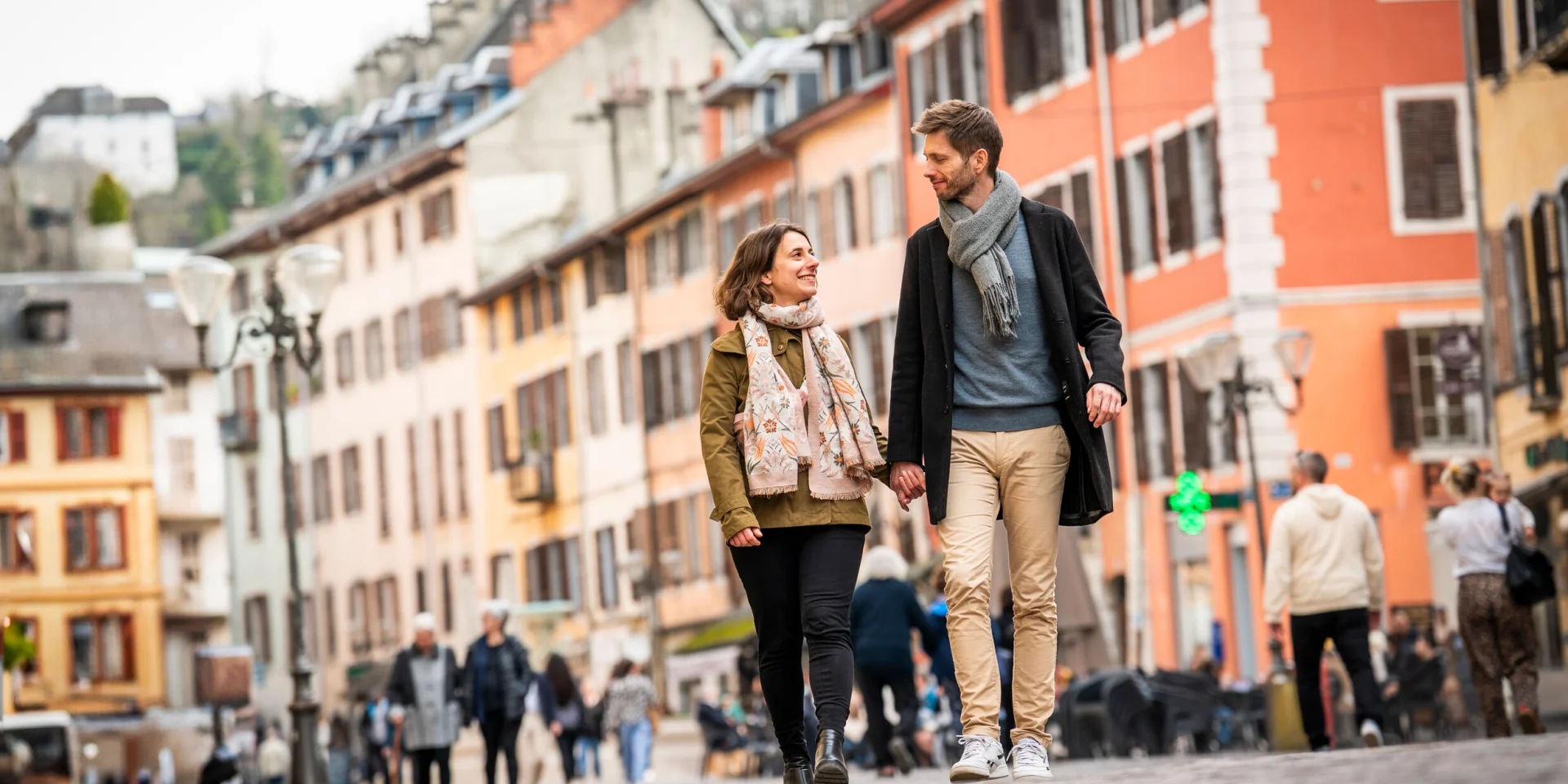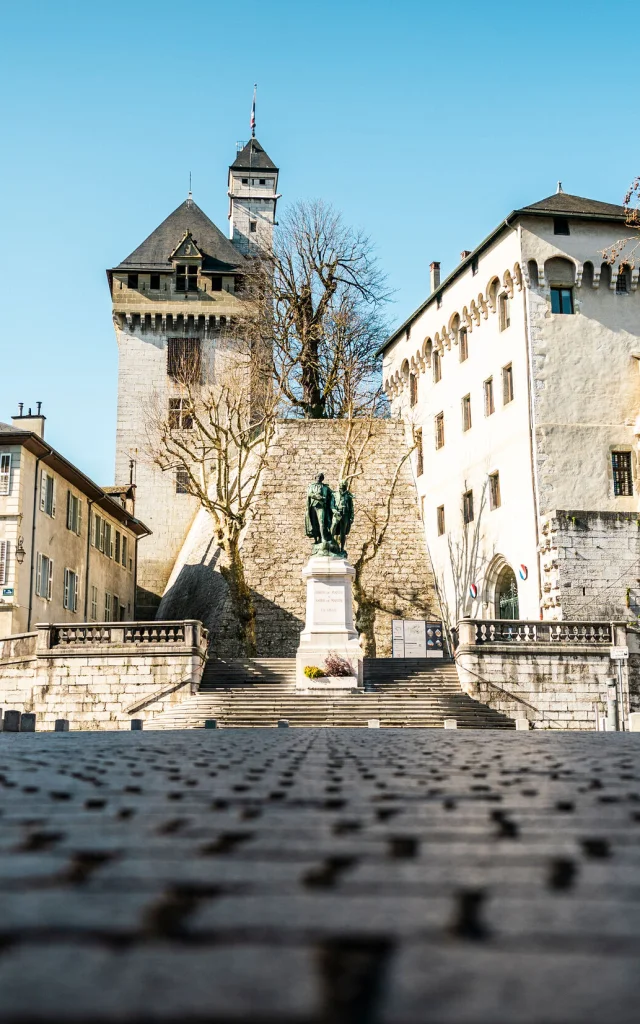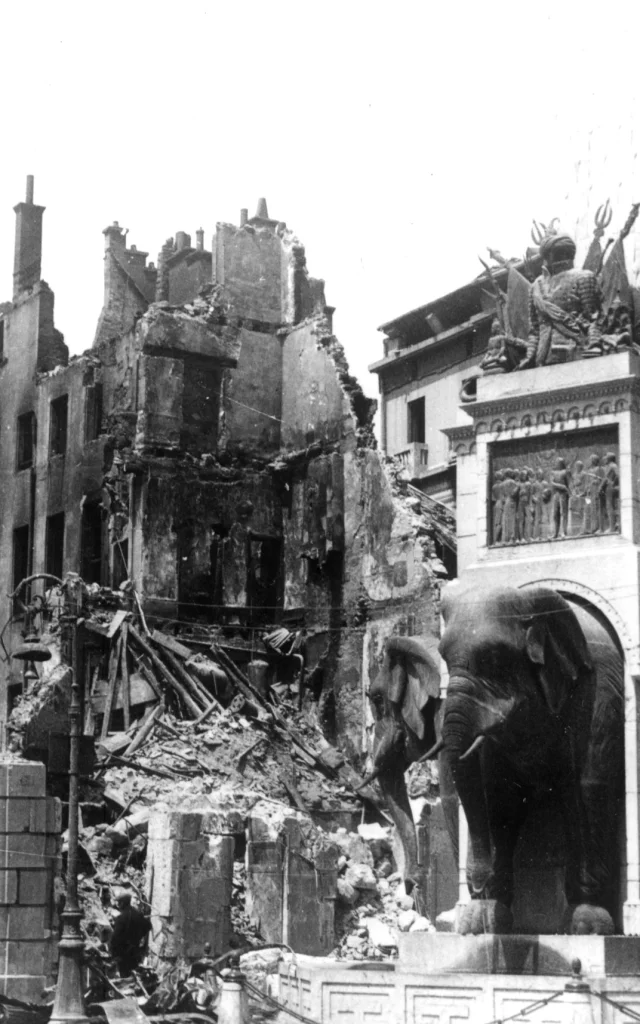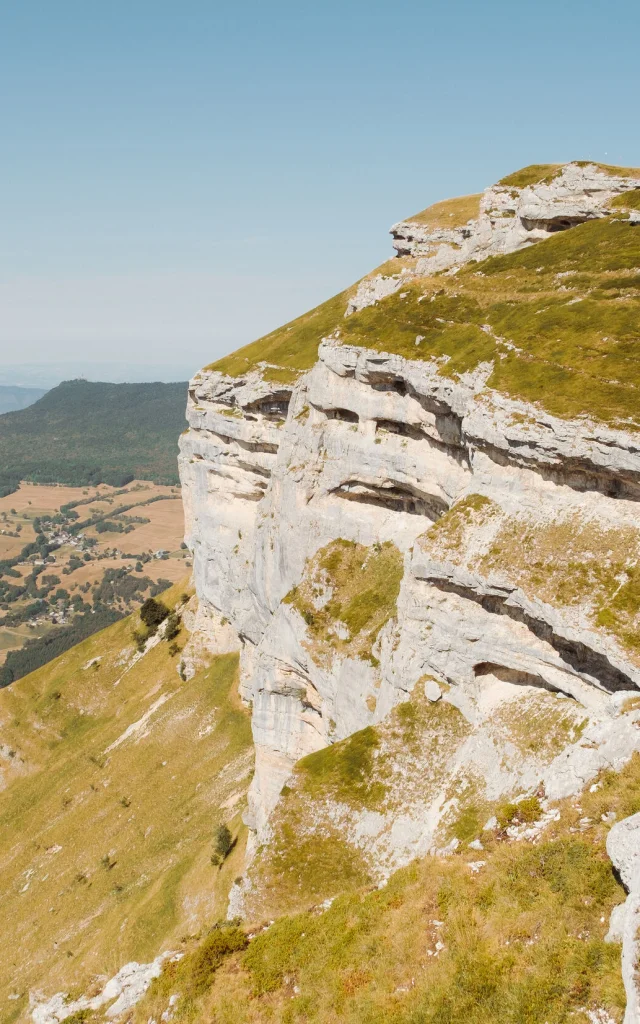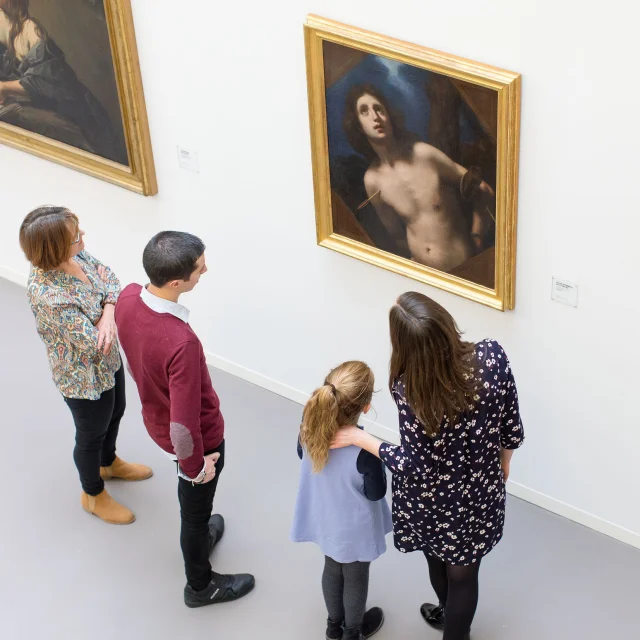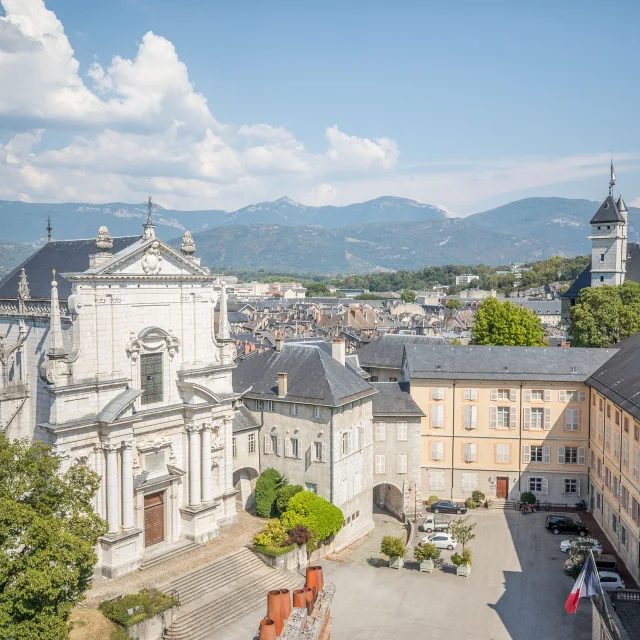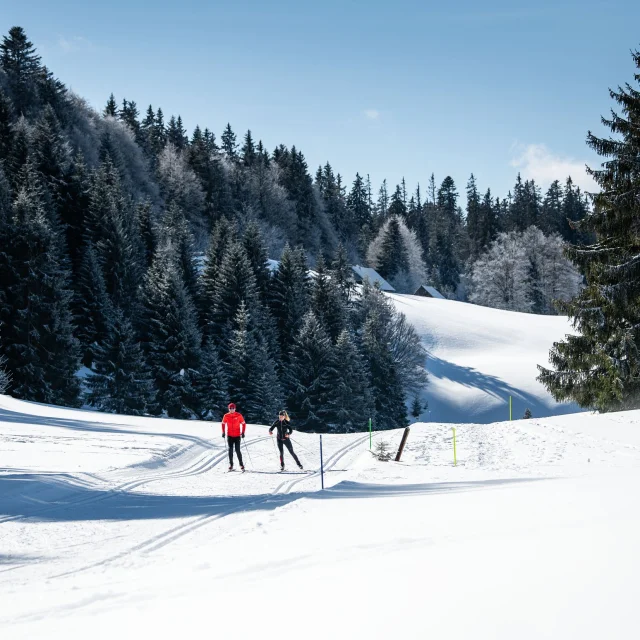Place Saint-Léger
Why is there a Place Saint-Léger when it looks more like a long street?
A Chambérien from the Middle Ages would be astonished not to see the Albane flowing through the heart of the town. In those days, small stone bridges were used to cross from one bank to the other. Each had its own name: Grand’Rue on one side, Rue Grenaterie (later Rue Tupin) on the other.
At the end of the XVIᵉ century, the Albanne branch was covered over. The names disappeared and gave way to a new name: Place Saint-Léger. The name paid tribute to the church that stood on this small street space, on the current site of the Marmousets fountain, until it was demolished in 1760.
This is how today’s Place Saint-Léger, which is both long and narrow, came to be known as a “square” rather than a “street”.
An unusual fact: the Saint-Léger church itself was built astride the river. To cross the river, you had to go inside the church… sometimes even with your arms full of provisions in the middle of a church service!
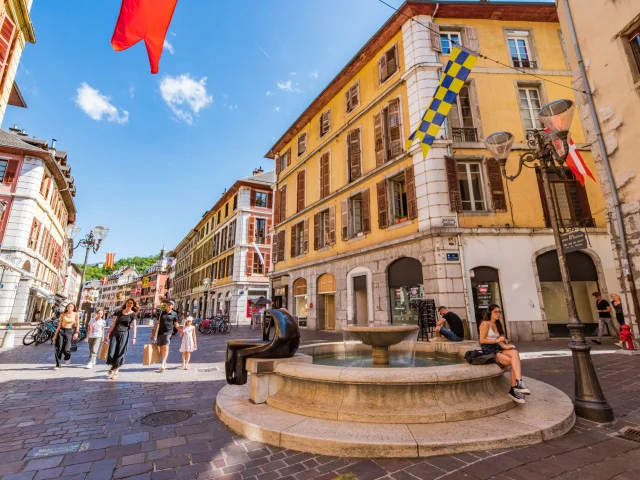
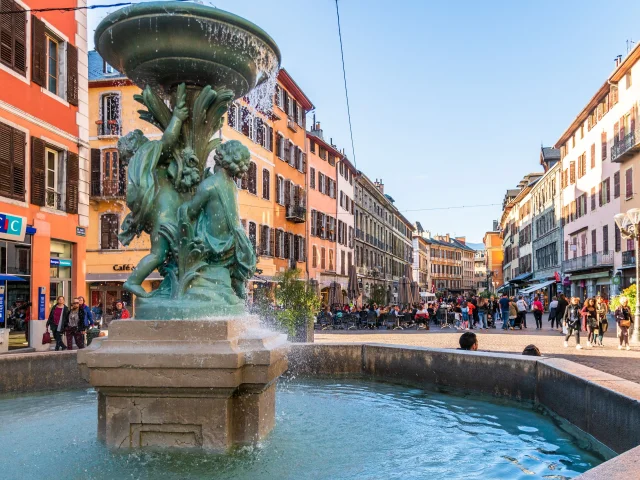
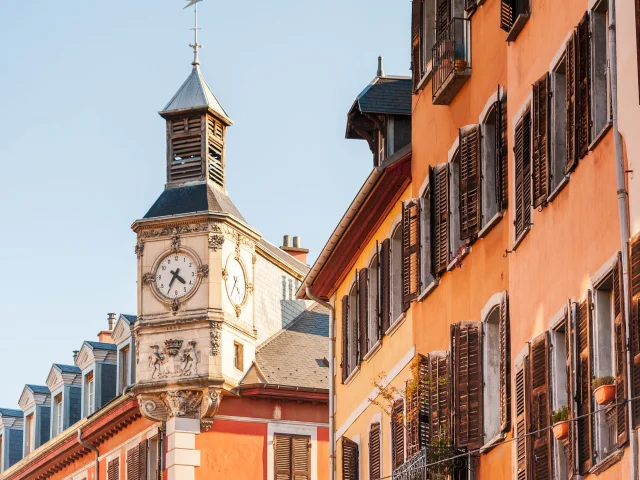
The alleys
Lyon has its traboules, Chambéry has its allées. A real curiosity in the historic centre, they are like secret passageways slipping between tall, colourful buildings.
Their origins lie as much in history as in geography. Chambéry’s medieval buildings are deep and narrow in front, a direct consequence of the “toisé”, a 14thᵉ century tax calculated on the width of the main facade. The narrower the house, the lighter the tax. Hence the characteristic urban fabric.
The instability of a marshy subsoil would also have favoured their birth: these long corridors, sometimes parallel, sometimes labyrinthine, often covered, facilitated circulation while allowing the buildings to support each other.
Intimately linked to the history and identity of the city, the alleys are still the soul of old Chambéry. Most of them can be seen from the Place Saint-Léger, as you stroll through the city.
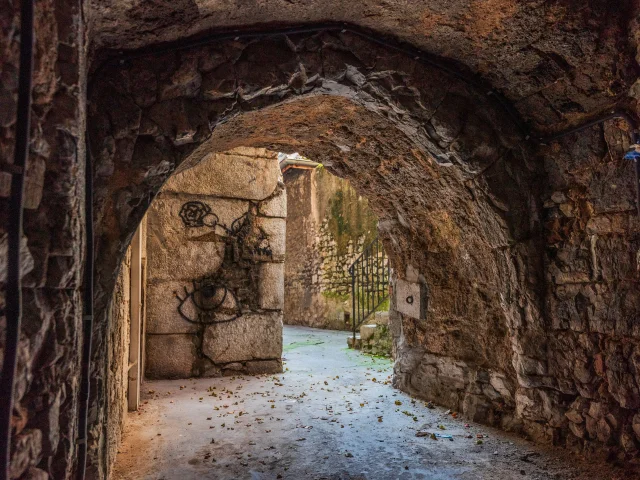
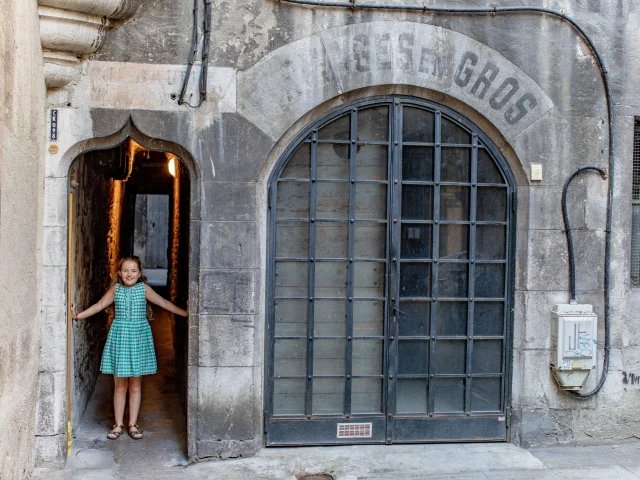 GCAT_072166
GCAT_072166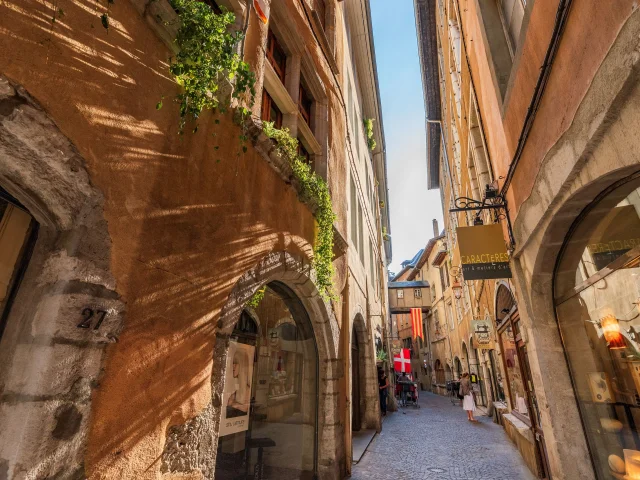
Chambéry'CimesYou might also like to listen to...
Rue de Boigne
When someone from Chambéry tells you to “meet under the porticoes”, it has to be rue de Boigne!
This major thoroughfare, opened in the early XIXᵉ century, owes its name and existence to General-Count de Boigne, a benefactor of the town, who financed its construction. Its layout proudly aligns the castle of the Dukes of Savoy on one side and the Elephant Fountain on the other, a monument erected in his honour in 1838.
At the time, it was a real sabre-rattling in the old town: many houses were demolished to make way for this modern breakthrough. But it brought air, light and a smoother flow of traffic to the heart of Chambéry.
Another consequence was the disappearance of the “cabornes” from the Place Saint-Léger. These small wooden shops, with their overhanging roofs, gave the impression of a covered street. With the creation of the rue de Boigne and its elegant arcades inspired by Turin, these popular shops were left to fade into insignificance… and were sacrificed in favour of a street with a more refined style, which has since become a symbol of Chambéry’s town centre.
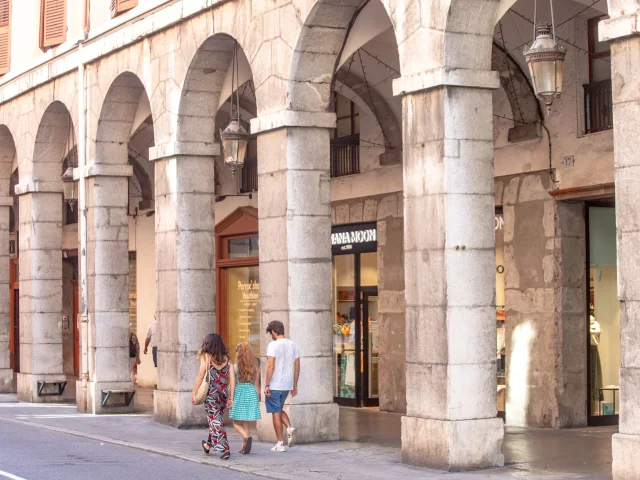
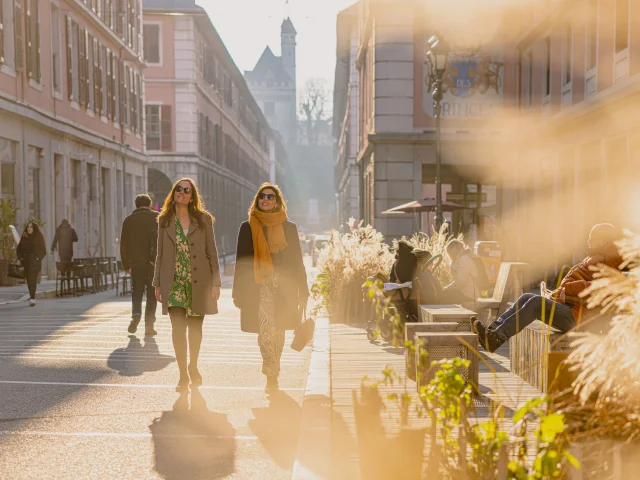
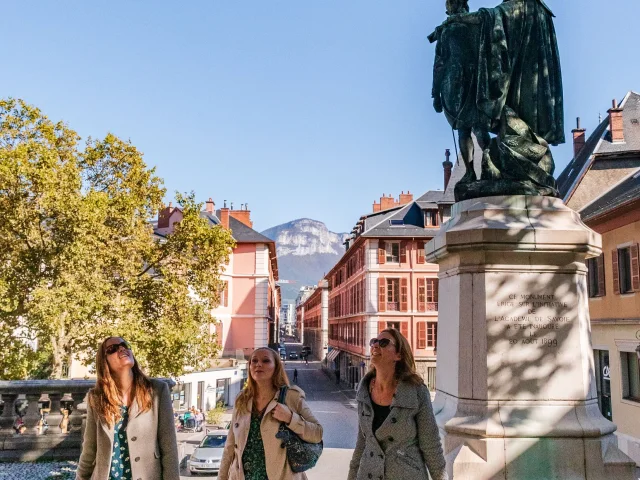
Chambéry’Cimes
is a Chambéry Montagnes podcast.
Sound recording, editing, mixing and production: Kamel Bouziane, Art AbordSavoie.
Melodies by Skal.
In this second episode, we explore Chambéry in the company of Chantal George, historical monuments guide, Jacques Viout, vice-president of the Société des Amis du Vieux Chambéry and Julie Chavaribeyre from the tourist office.
